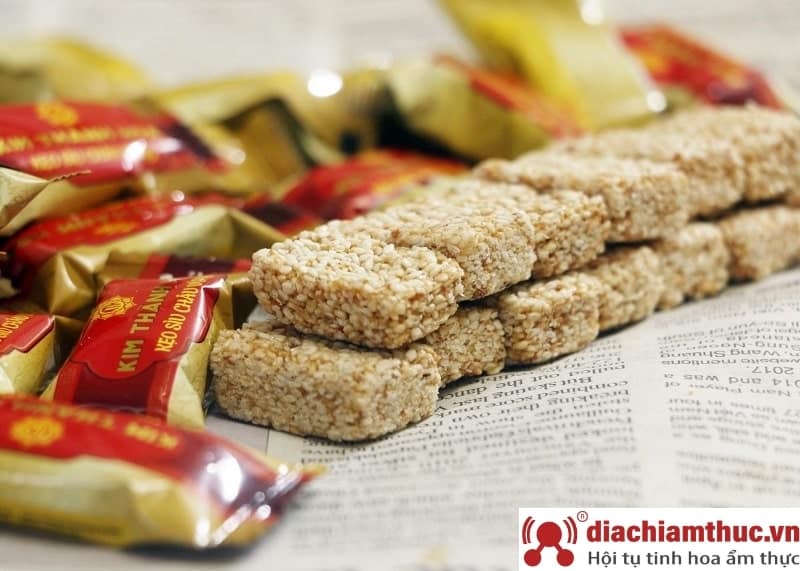For nearly 200 years, the aroma of the brand Siu Chau – Nam Dinh specialty has become famous and spread far and wide all over the country. Those who have been away from their homeland for a long time and set up a career, every time they think of Nam Dinh, they will remember the rustic and rustic taste of this simple hometown gift.

Si Chau candy
The ingredients to make Siu Chau candy are simple: peanuts, sesame, sugar, and malt. But by the skillful hands of skilled artisans after the oven. The candy will be pinkish brown and clear like amber. When put in the mouth, it has a crispy, fragrant, and sweet taste that leaves an unforgettable aftertaste for people to eat. In particular, the candy doesn’t have any bad smell of peanut oil, so it won’t rot or soften for a long time. Each shaggy candy bar is covered with glutinous rice flour, which acts both to prevent moisture, soften the cake and incubate so that the candy can grow up its fragrance.

Si Chau candy – review
Siu Chau candies are most delicious when you enjoy with a cup of fragrant hot romantic tea. The crisp sweetness of the candy, the slightly bitter, warm taste of the tea will make you no longer feel the sharp sweetness in your throat. It will have a sweeter taste that will be much more gentle. In Nam Dinh, on the occasion of Tet, this candy often appears to entertain guests.
- Suggested place to buy: Kim Thanh Hoa Siu Chau Candy
- Address: 122 Minh Khai, Nam Dinh City
- Reference price: 35,000 VND/box of 500g
Source: Collected internet.
Vietnam is an exciting country for tourism and investment. Bustling street life, delicious cuisine and majestic scenery all await you. A country constantly in motion, Vietnam always balances young urban culture with traditional values. In the city, ancient temples are just a turn away from modern shops. In the countryside, life still flows along the rivers and harvests. This contrast between old and new makes up a large part of Vietnam's appeal. Another reason to visit Vietnam is its natural beauty. The North has majestic mountains and beautiful limestone bays. The Central Coast Road leads to historical relics and romantic beaches. And in the South, the sleepless life of Ho Chi Minh City and the riverside villages in the Mekong Delta will make you want to linger forever.
Eight UNESCO world heritage sites stretch across Vietnam. Each place offers interesting perspectives on local life and majestic natural beauty. The Imperial Citadel and Hue mausoleums take you back to the Nguyen Dynasty full of ups and downs. Hoi An ancient town was once a bustling meeting point for ships and traders around the world. Throughout other provinces and cities, you will encounter ancient relics, poetic scenes, and vivid pieces that create the picture of Vietnamese heritage.
Vietnam's terrain has about 40% mountains and forests, 40% hills and coverage of about 75% of the country's area. There are mountain ranges and plateaus such as Hoang Lien Son range, Son La plateau in the north, Bach Ma range and plateaus following the Truong Son range in the south. Network of rivers and lakes in the delta or mountainous areas of the North and Central Highlands. The delta accounts for about 1/4 of the area, including deltas such as the Red River Delta, Mekong River Delta and the Central Coastal Plains, which are densely populated areas. Cultivated land accounts for 17% of Vietnam's total land area.
As a province in the Southeast region, Binh Phuoc is known for its pristine and idyllic beauty. In recent years, Binh Phuoc is emerging as an interesting place to visit and explore for domestic and foreign tourists.